
Why Clothing Brands Fail
Top Different Types of Shirts for Women and Men Top Different Types of Shirts for
Sustainable Dyeing Methods in Clothing Manufacturing Clothing Brands Need To Utilize In 2025
Eco-friendliness is one of the most effective factors for B2C brands wanting to make a unique name in the competitive clothing market. And in 2025 consumers are even more eco-conscious. That’s why brands need to add more sustainable clothing products to their collection. One such is the use of sustainable dying methods in clothing manufacturing. The use of these traditional methods of dying is extremely detrimental to our ecology, endangering aquatic life and negatively affecting and contaminating waterways. Therefore, in order to protect the planet’s valuable resources, people in the modern world seek more sustainable solutions since they are better educated and aware of the threats to their ecosystem. People have been dyeing clothes for a millennium. This practice dates back to 3500 BC. Before WH Perkins discovered synthetic dyes in 1856; pigments and oil were used to make all colors utilized in the dying process. Approximately 90% of our clothes are dyed synthetically these days. New sustainable dying technologies and eco-friendly practices are essential to protecting the environment from industrial pollution.
Due to ineffective dyeing and finishing procedures, approximately 200,000 tons of dyes, valued at $1 billion USD, are lost to wastewater (Chequer et al., 2013). That brings our attention to the fact that these traditional methods not only are waste of water but also resources.
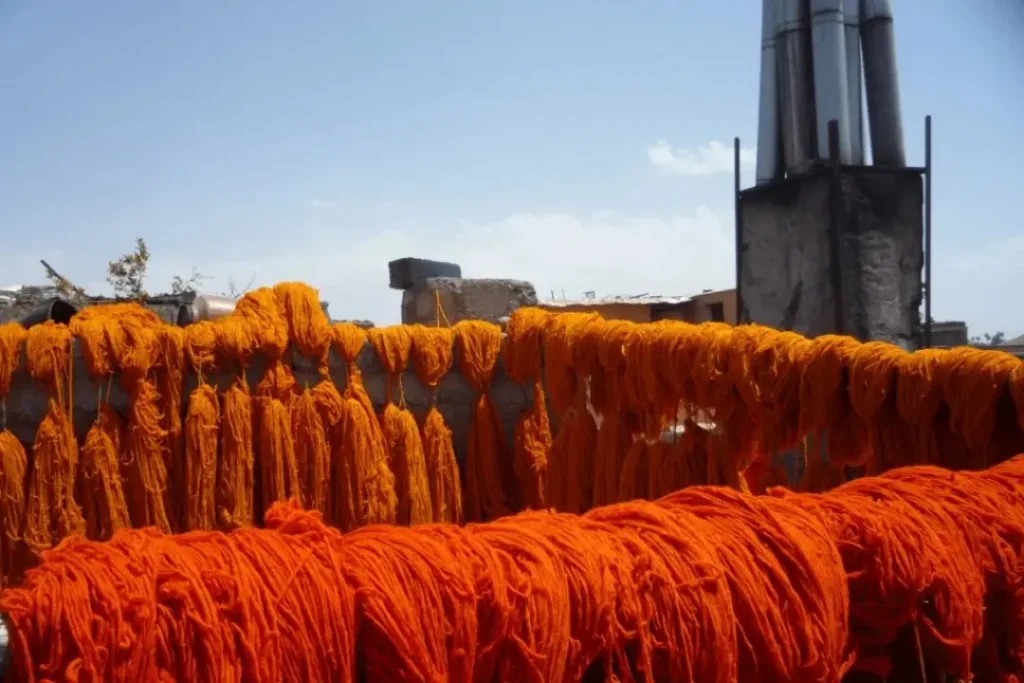
Conventional means of dying are associated with multiple problems. Approximately 125 liters of water are used for every kilogram of cotton when clothing manufacturers use these procedures. It showed that traditional dyeing techniques demand a lot of energy to heat the water and steam it in order to produce the desired output, and they also consume a lot of water, which pollutes the water.
In addition to using excessive amounts of water by fashion industries, traditional dyeing methods release harmful chemicals into the water they utilize. These conventional methods for dying pose a poisonous risk to life. Because it pollutes the water and contains chemicals that cause cancer, it is extremely harmful to life. Aquatic biodiversity and other natural resources are also impacted, in addition to population.
Life-threatening substances, including dyes, mordants, and other additives, are present in the water used by textile manufacturers in the dying process. They degrade the environment if they are not treated in a timely manner and are released into rivers and lakes. Aquatic ecosystems are disrupted when the amount of dissolved carbon dioxide in aquatic life is reduced.
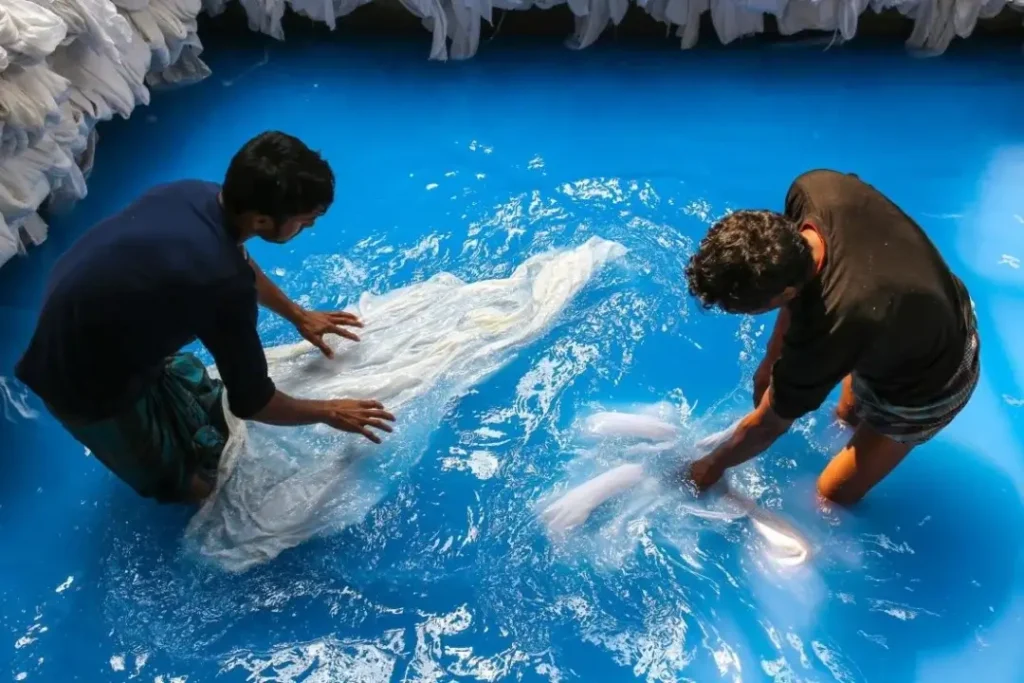
Traditional dyeing techniques used by the textile industry are particularly energy-intensive because heating the water used to dye the fabric requires a lot of energy. Additionally, it depletes natural energy resources when old fossil fuels are used in dyeing processes, which exacerbates environmental concerns about climate change and greenhouse gas depletion
The use of harmful chemicals in clothing industries for dying procedures is hazardous to health as they contain toxic chemicals that are carcinogens including azo dyes, formaldehyde, chlorine bleach, and heavy metals like chromium and cadmium. Polyester is frequently dyed with chlorobenzenes, which are harmful if inhaled or come into direct contact with the skin. In finishing operations, fluorinated compounds, formaldehyde, and chlorinated paraffin are used to produce flame retardance, waterproofing properties, or easy-care textiles.
These chemicals used by clothing manufacturers are a big threat to the workers working in the industry or are residents near the industry causing respiratory issues, skin issues, and other health problems by the pollutants used in the dying process. Due to the pollutants used in the dying process, these chemicals also pose a risk to those who work in the industry or live nearby. They can cause respiratory, skin, and other health problems. These are very toxic and are not biodegradable and contaminate water and soil.
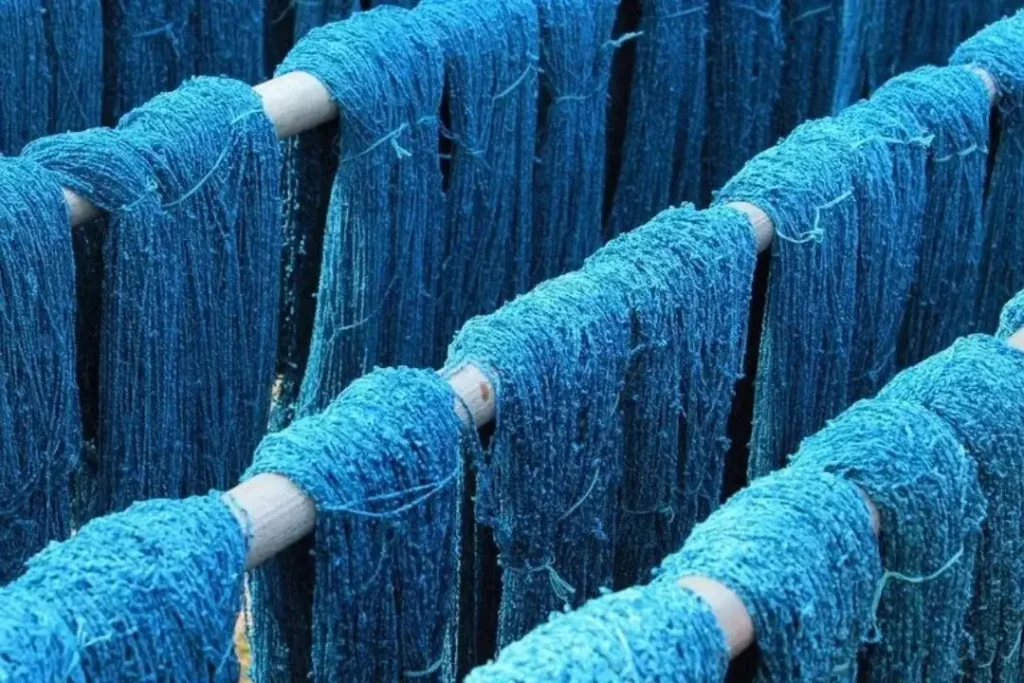
Natural and organic eco-friendly inputs are used in sustainable dyeing techniques. We obtain these dyes from non-toxic, biodegradable natural sources such as plants, insects, and minerals. In contrast, synthetic dyes that emit toxic compounds into lakes and contaminate them are unhealthy. On the other hand, natural dyes are the ideal substitute when it comes to environmental and health issues.
Eco-conscious clothing manufacturer industries use natural colors from plants, such as madder root for earthy reds, turmeric for vivid yellows, and indigo for bright yellows. Their potential to fade sooner than synthetic ones is the primary problem with the natural dying process. However, in order to solve this problem, innovations are being made these days.
The water consumption of traditional dyeing procedures is significantly higher than that of sustainable dyeing techniques. Waterless dyeing methods, like hair dye, which only require a heat source to dye fabric, automatically reduce the amount of water used during the dyeing process.
Additionally, Eco-Conscious Clothing Brands employ supercritical CO2 dyeing, which marks the dyes on the fabrics by using CO2 as a solvent. That removes the need for hazardous chemicals and drastically cuts down on water use.
By employing these methods, water consumption is reduced, protecting the environment from water contamination.
Environmental-friendly Clothing Manufacturers use another strategy to cut down on water use is to use circular dyeing techniques. Its primary goal is to recycle dye water using a variety of methods. Reverse osmosis can purify and recycle 90% of dye water, which is why we use advanced filtration machines in the recycling process.
A Zero-liquid discharge system, in which all wastewater is recycled and reused, is one of the primary methods for recycling water. This technique leaves no liquid behind. To further avoid contaminating the environment, several manufacturers are coming up with other ways to use biodegradable thickeners to break it down.
Plant-based dyes are used to color textiles because they are non-toxic, biodegradable, and the greatest substitute for conventional dyeing techniques that contaminate water by releasing harmful chemicals into it. Plant-based dyes have the drawback of fading more quickly, but some clothing manufacturers are finding solutions to this problem.
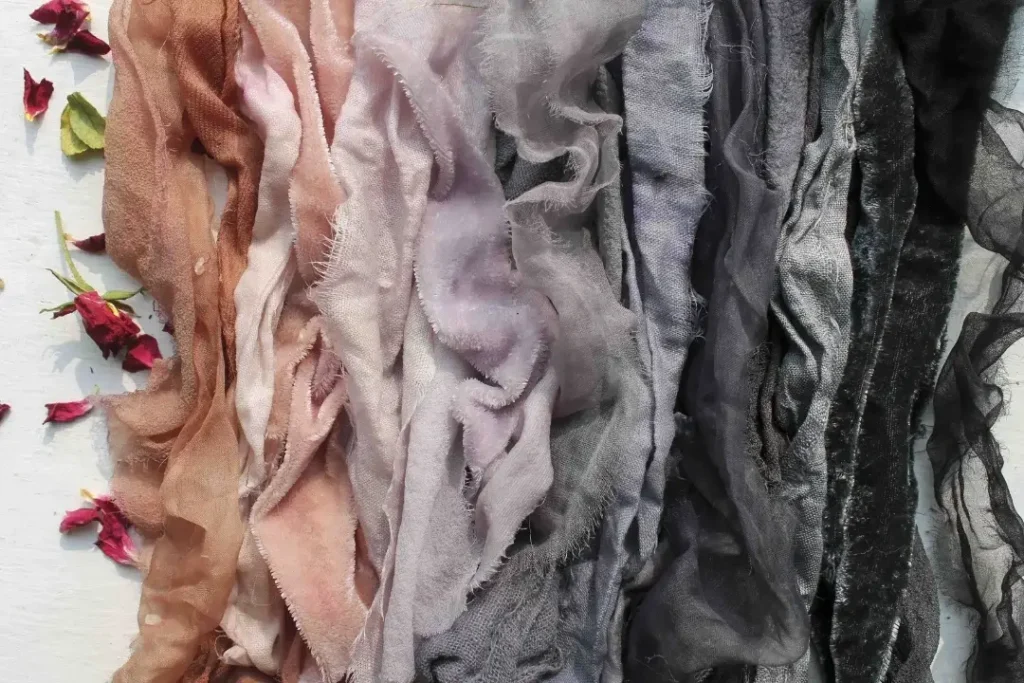
Waterless dyeing procedures are methods that use supercritical CO2 to dye the fabric rather than water. that is most effective in lowering water consumption, aggressively lowering water pollution, and creating an eco-friendly environment for eco-conscious consumers.
The precision process used in the digital dyeing procedure creates a fabric dye with little waste and yields the required fabric or customized design. Their innovative and environmentally friendly design is the reason for their increasing appeal to Fashion Enthusiasts.
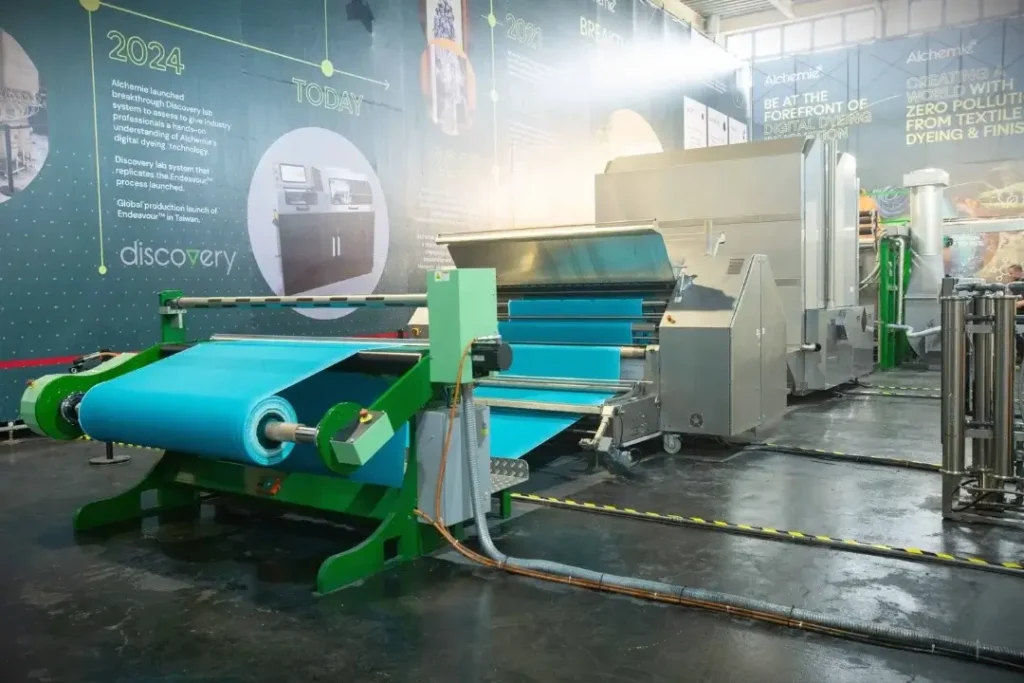
This technology modifies conventional approaches that are thought to be environmentally friendly. They are eco-friendly, non-toxic, and require little water to dye the fabric; this technique is said to be safe for natural cotton and lowers the risk of population contamination.
Bio Organisms are used to dye textiles, such as bacteria that ferment to produce various colors and algae that provide green and blue hues. Manufacturers design it to be cheaper as well as low energy consumption.
This approach uses a foam dyeing method instead of water baths, which reduces water and energy usage by 50%. The method is quick and causes less contamination of the water.
Following are the Sustainable Dyeing Methods in Clothing Manufacturing
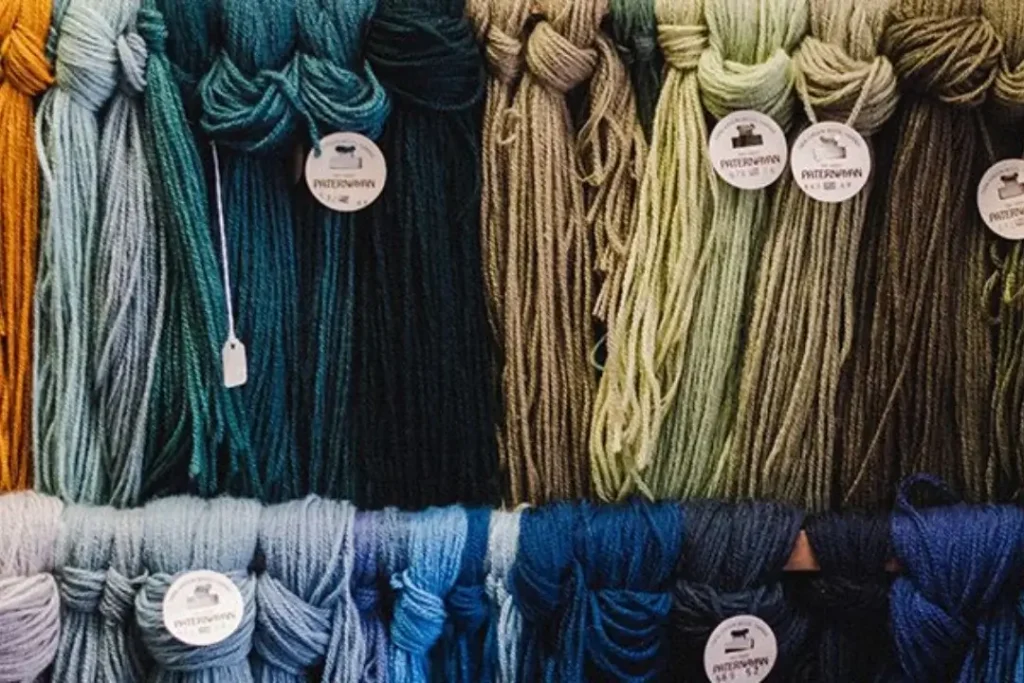
Exhaust dyeing, which is a sustainable dyeing method approach to protecting the environment from pollution, is the process of dying the fabric under controlled conditions. This technique, which works with cotton, wool, polyester, and nylon, transfers dye from the dye bath to the specified cloth by molecular interaction, heat, and agitation. If not treated properly can cause hazards to health and the environment.
Exhaust dyeing involves several steps
It is to purify the cloth of impurities so that the dyeing process may proceed more effectively.
In this process, fill the water bath which should be considered by utilizing dye, chemicals, and water.
In this step heat the dye and cause its molecules to interact so they can travel gradually from the water bath to the desired fabric.
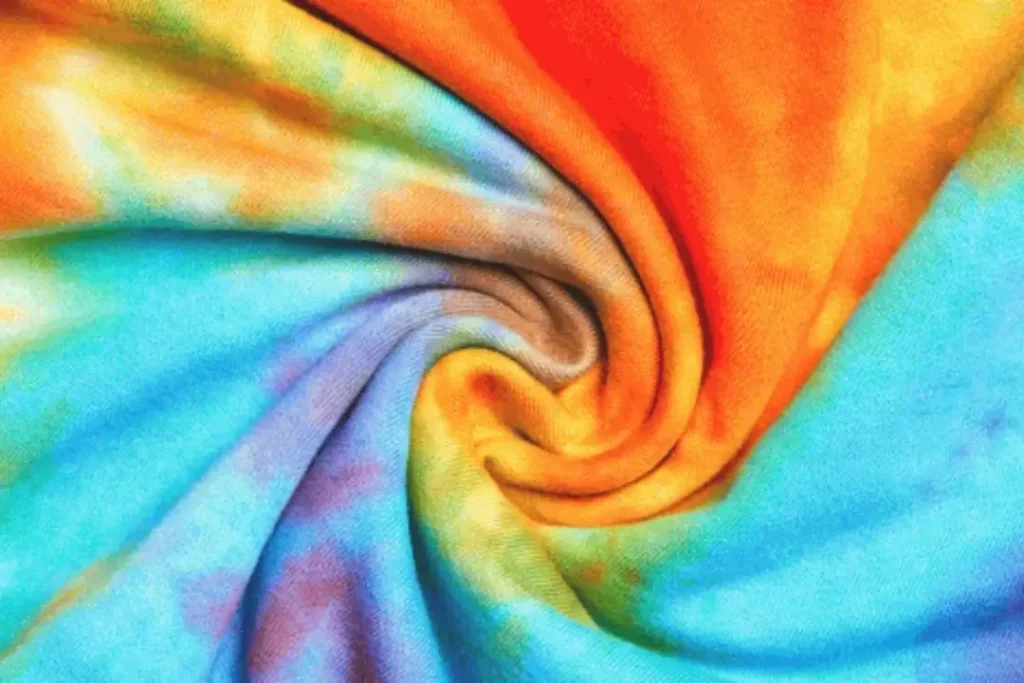
In this process, the dye should be fixed onto the fabric by using chemical agents under control conditions.
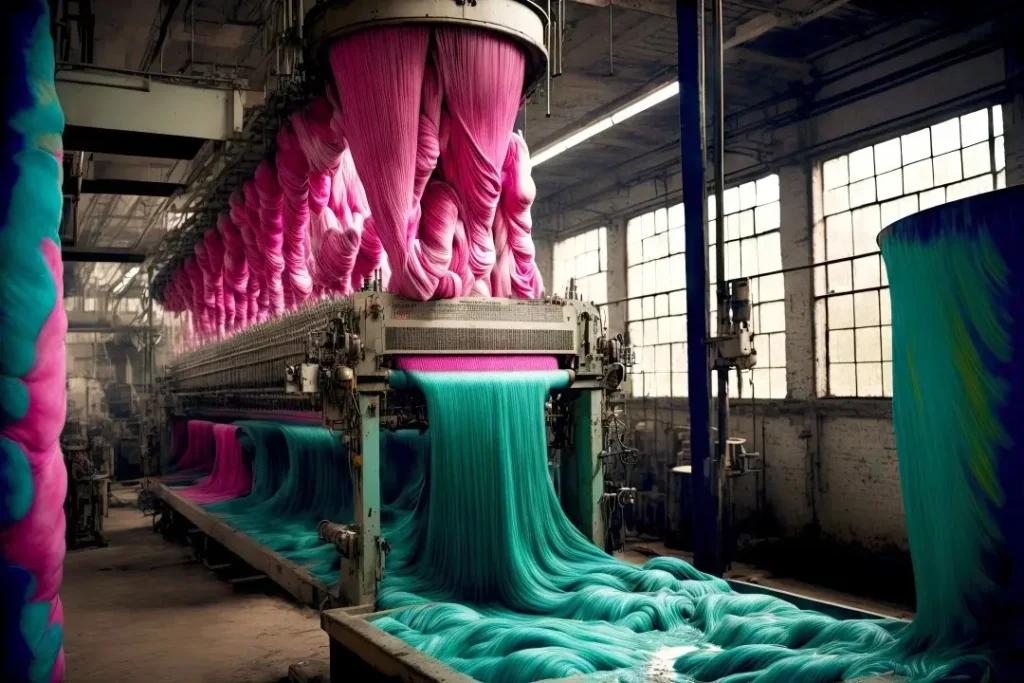
Rinse the fabric ‘in this step fabric should be thoroughly rinsed so that the fabric gets a more intrinsic look with more improved color contrast.
Fabric is continuously dyed using a variety of sequential processes. Every sequence starts with a padding stage. The cloth is submerged in the dye liquor, which is continuously refilled from a stock tank, in a trough with a small capacity. Low-substantive dyes are typically utilized in continuous dyeing processes and a liquor ratio as low as 1:1 may be employed.
Another environmentally friendly Sustainable Dyeing Method in Clothing Manufacturing is continuous dyeing, which involves continuously adding dye to the fabric that needs to be dyed. Its fast speed, consistent designs, and affordability make it ideal for large production. It works well with fabrics that need to be dyed uniformly throughout a huge piece of fabric in the bulk category. This characteristic makes it ideal for large-scale fabric manufacture, uniforms, and bed linens. It can also require a lot of energy and water, therefore to make it more environmentally sustainable, water recycling systems, low-liquor dye baths, and energy-saving methods that are good for the environment and natural resources should be put in place.
In the pad steam dyeing method, fabric is first dyed with padding and then exposed to steam to set the dye into the fabric. In this procedure, the dye is uniformly dispersed to the fabric by employing reactive dyes of sulfur and vat.
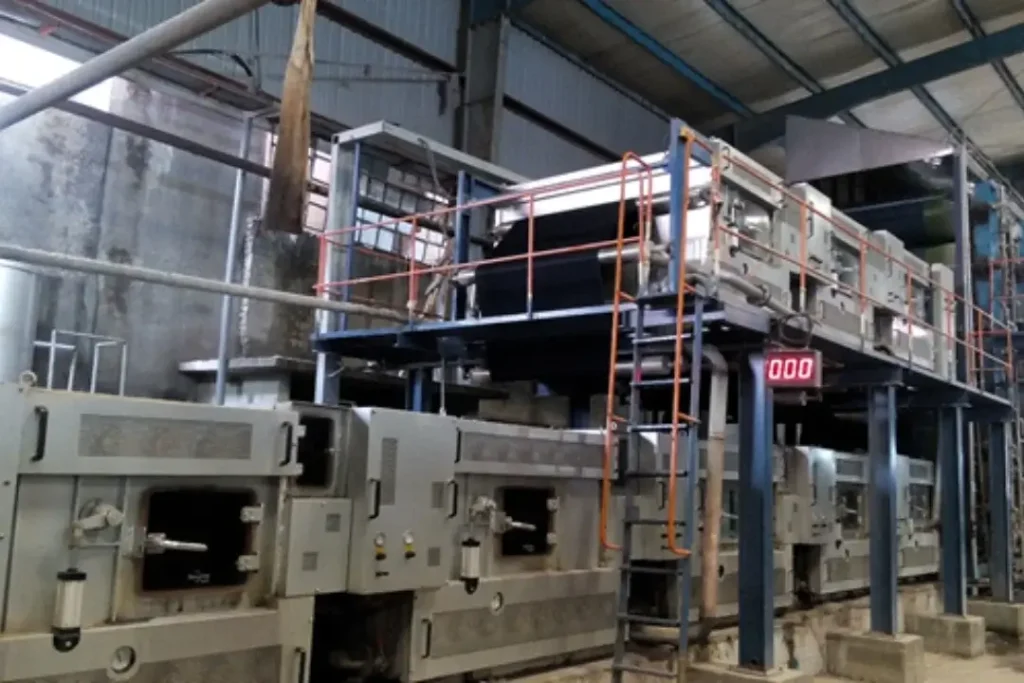
The pad dry method is perfect for large-scale manufacturing with consistent designs and quick turnarounds. Fabric is dyed by padding and steam-drying, but it should also be driving over a high temperature to set the dye to the fabric.
This category also includes the thermos process, which uses a high temperature of up to 220 °C to fix the dye to the fabric using the dispersion dye procedure. To achieve the required fabric design color contrast and fabric endurance, it must be done with extreme caution.
In the semi-continuous technique, the fabric is dyed using a pad match and pad roll in a padding machine that has been impregnated with liquor. The fabric can then be dyed in a badge way in a jigger or preserved for a few hours for optimal results. In a pad match, this is done at normal temperature, but in a pad roll, the chemicals of the padding machine must be heated to a high degree. It should be done to adhere the dye to the cloth, and the fabric is then thoroughly rinsed. It combines aspects of continuous and batch processes. It’s perfect for production on a medium scale. It’s the best method for fabrics that need time to react with the dye and finish the process like cotton.
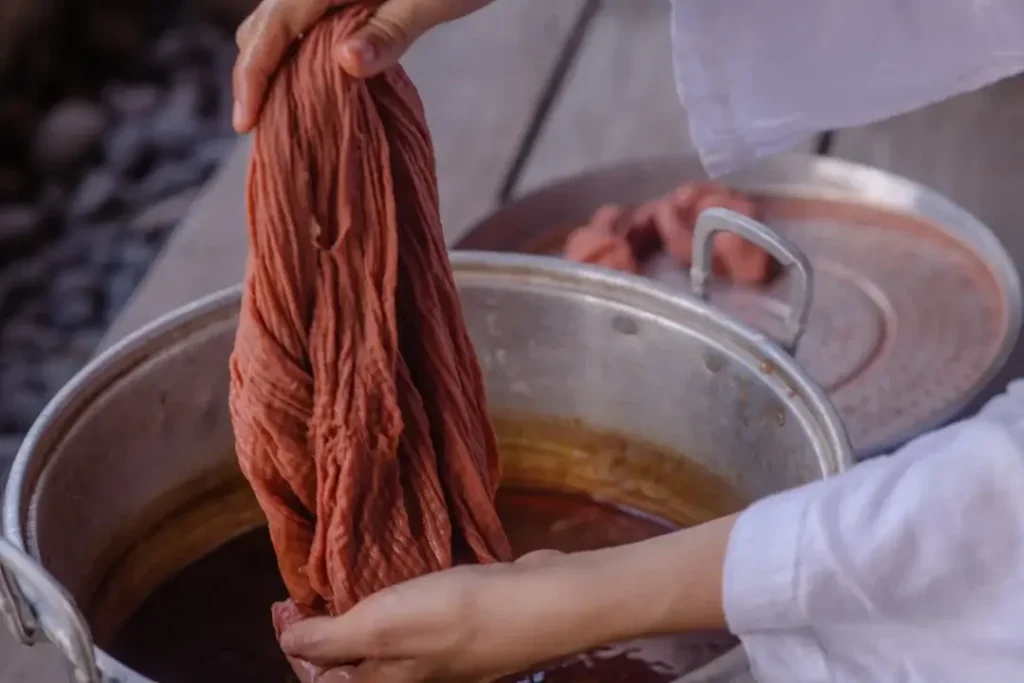
The method of electrochemical dyeing involves substituting electrons for reducing agents in order to remove dangerous compounds from water and pollute it in a way that could be fatal.
In direct electrochemical coloring, the fabric is dyed using direct electrochemical agents rather than reducing agents, which is bad for the environment and human health. In contrast, the coordinate electrochemical coloring process uses electrochemical reactions to dye the fabric rather than reducing agent reactions, which results in an environmentally friendly environment and is also good for producing vibrant and uniform hues. It is frequently used to paint metal and textiles.
Another intriguing Sustainable Dyeing Method in Clothing Manufacturing is foam dyeing. It includes dying the fabric using foam rather than any dangerous chemicals. Formaldehyde, the ingredient used to manufacture foam, is a great environmentally friendly substitute for water, which is extremely harmful to both the environment and human health.
These foaming chemicals are used to create foam using aqueous solutions that are used or dispersed onto textile material rather than ending up as waste. These substances can immediately wet them and stabilize them, produce foam instantly, and are unaffected by temperature. It uses two kinds of foam: dispersion foam, which is created by combining a gas and a liquid, and condensation foam, which is created by combining gases in a liquid by chemical or PH methods.
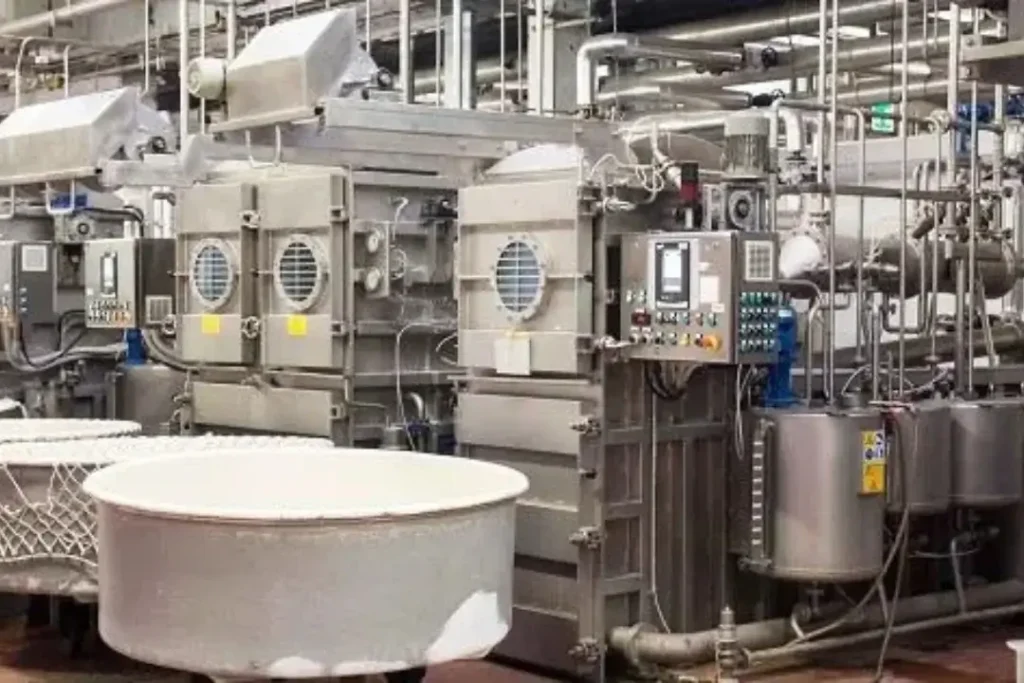
In microwave technology, fabric is dyed using a microwave. This procedure involves adding fabric and dye to a microwave container with hot water, properly sealing and covering the container, and then placing it inside to allow the dye to completely soak into the cloth. Although it has the benefit of preserving the fabric’s tensile strength, its disadvantage is that it cannot produce uniform dyeing.
High-frequency sound waves are used in ultrasonic wave dyeing technology to color fabric, which is a healthier option for water-based dyeing techniques. It makes them environmentally friendly and produces less waste, which makes them a more appealing choice for sustainable textile dyeing techniques. In order to dye the cloth with exceptional results of deeper penetration and brilliant long-lasting colors, the ultrasonic waves utilized in this dyeing procedure create microbubbles and extreme agitation with high-intensity sound waves in a water bath.
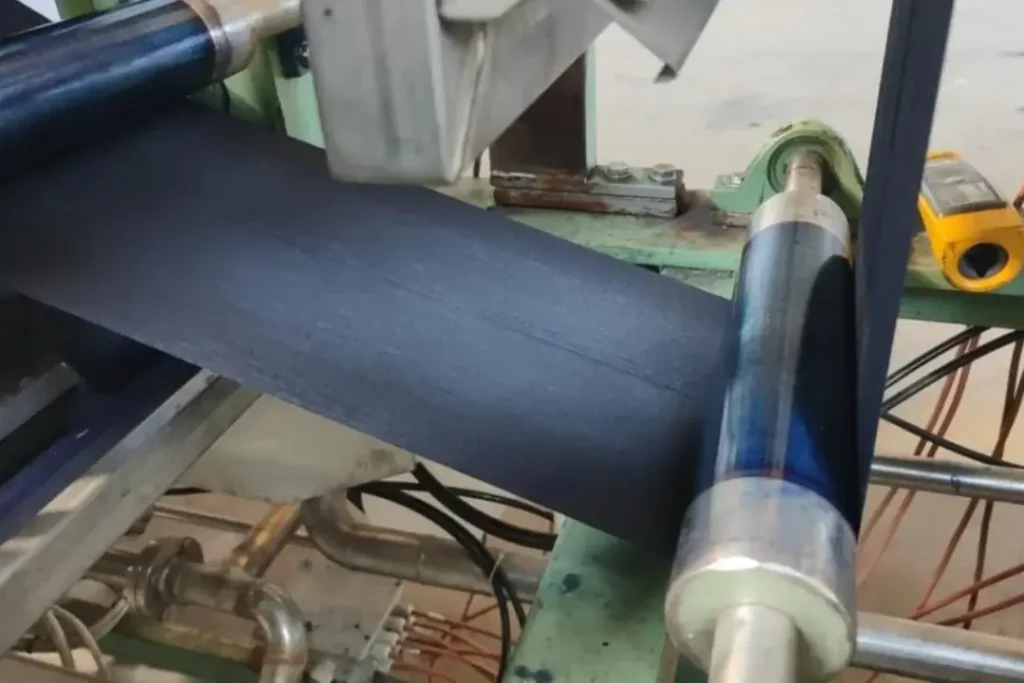
The primary applications of plasma technology are surface modification and textile material improvement, including increased dyeing rates, color enhancement, and coated dye adherence and diffusion. After placing the bicolor textile material within the chamber, plasma is stimulated. After being created, the particles interact with the textile material’s surface. The material’s surface is organized with functional groups and forms a thin film that is nanometers in size. There is less water and chemical discharge. The resulting color is vivid and long-lasting. There is very little impact on the environment.
During operation, this treatment releases toxic gases such as nitrogen oxides and ozone.
The plasma device is expensive.
Pigment dyeing is not true dyeing, as the color adheres to the fabric using binding agents rather than forming a chemical bond. Pigments are water-insoluble and have no natural affinity for fibers, making traditional dyeing methods unsuitable. Instead, pigments are applied with the help of binders to fix them on the fabric. To address these limitations, pigment resin colors (PRCs) have been developed, which are stabilized in water with anionic surfactants and are primarily used in textile printing.
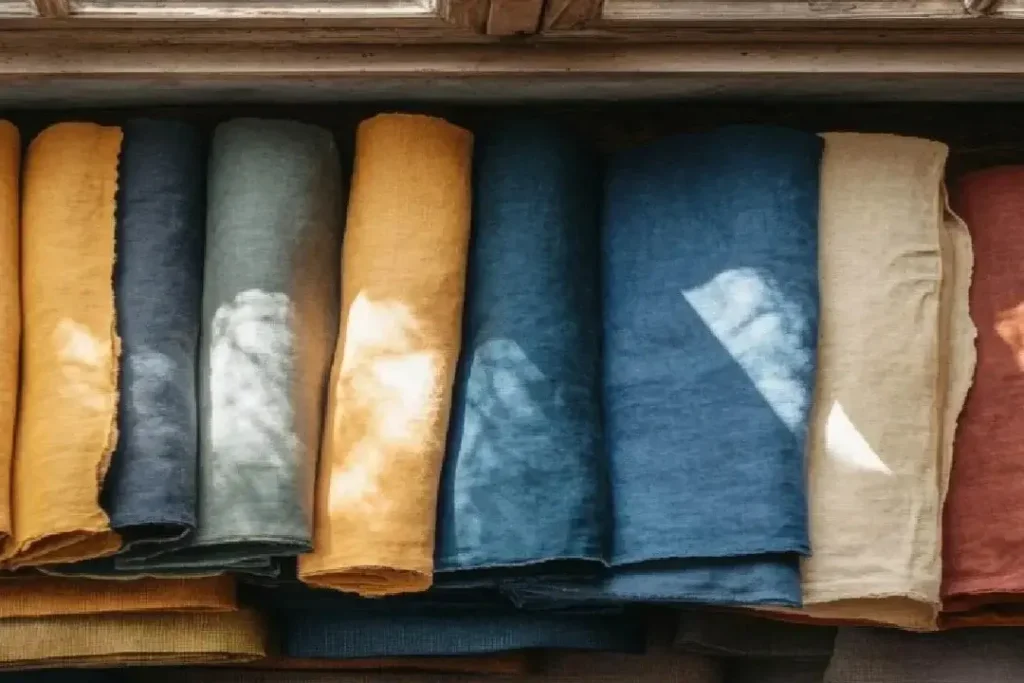
Ozone is a naturally occurring gas that protects the Earth from harmful UV radiation but can also be hazardous. It has a strong oxidizing effect and can be artificially produced through electrolysis, corona discharge, or UV radiation. In textile processing, ozone is used in a process called ozonation to improve surface modification and fiber durability. The effectiveness of ozonation in dyeing depends on factors such as pH, temperature, water level, and ozone dosage.
One new technology in the textile sector is nanotechnology. Instead of utilizing a lot of water and chemicals that are harmful to the environment, nanotechnology uses nanoparticles to dye the fabric. It results in superior dyed cloth with improved dye absorption and fixing. Less dye is used in this, improving its environmentally friendly methods.
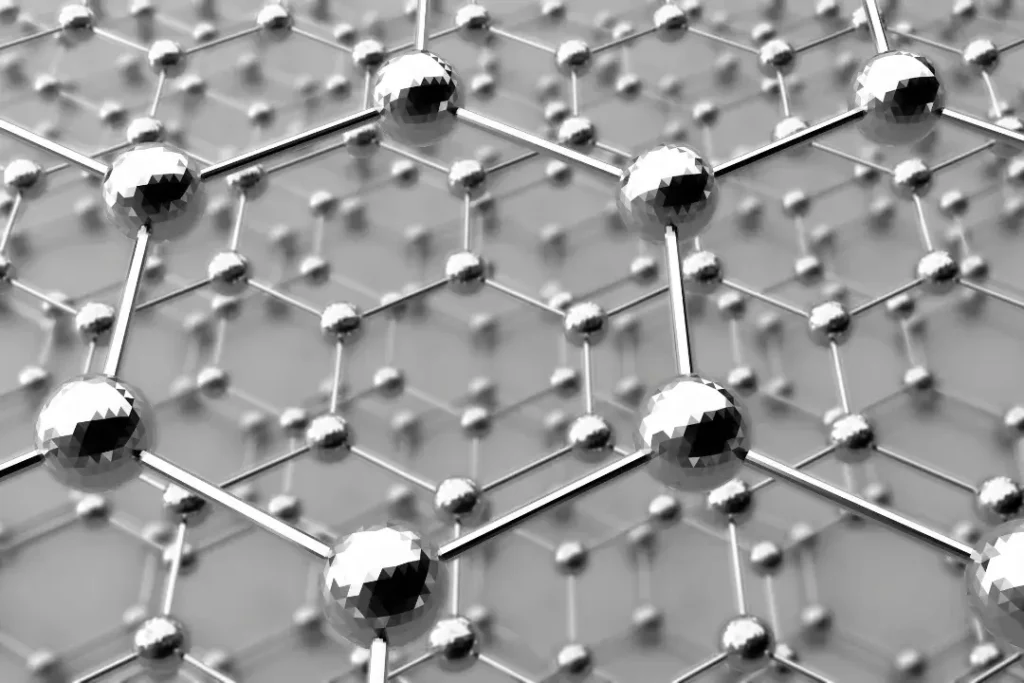
Another strategy for AI innovation is the use of artificial intelligence (AI) to forecast precise color trends and more environmentally friendly color dye compositions. It also offers suggestions for minimizing the amount of water and other reducing agents that negatively impact our ecosystem and endanger the lives of aquatic life and humans. Additionally, it contributes to increasing the dye processes’ efficiency, which helps control dying quantities and utilize less energy resources.
Plasma technology also contributes to a more environmentally friendly environment by using less water and chemicals. This technique contributes significantly to protecting the environment from health risks by using plasma, the fourth state of matter, to color the cloth more effectively.
The most sustainable dyeing method available now in the textile industry is cold pad batch dyeing. Water is used sparingly because the fabric is dyed at a low temperature. The cloth is dyed in a cold solution, which eliminates the need to set the dye at a high temperature. It also uses low water and energy, making it environmentally friendly.

Compared to traditional dyeing procedures, which use more water and energy and result in higher costs for water and energy resources, sustainable dyeing methods are more economical. Over time, these savings are better suited for brands that require lower operating costs and high final revenue.
People in today’s world are more educated and eco-conscious thanks to social media, so they prioritize eco-friendly methods that are much more suitable for their ecosystem. As a result, a brand that uses sustainable dyeing practices automatically gains fame and appreciation from the audience. This builds trust and loyalty towards the brand. For instance, Patagonia cultivates a favorable reputation among its audience by using eco-friendly shoppers, which tends to boost sales and customer retention, which in turn leads to better sales and profits.
Global enforcement of environmental standards necessitates eco-friendly laws. Sustainable dyeing techniques assist businesses or brands in adhering to these rules, preventing severe fines and granting them access to markets where environmental standards are given first priority.
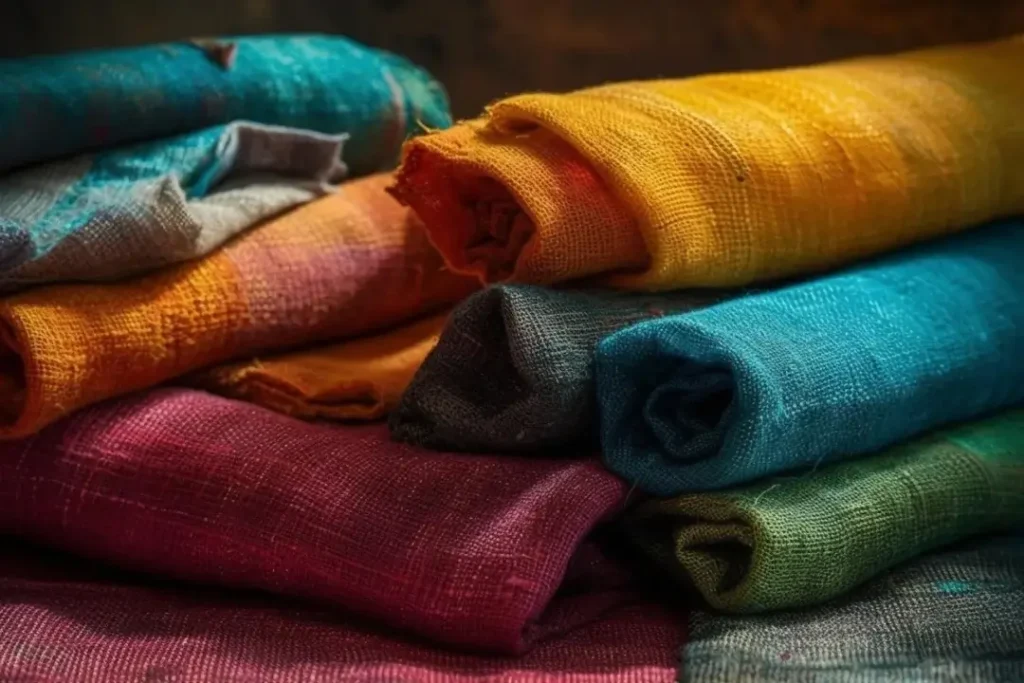
New clothing brands must deal with significant upfront expenses since they have to use Machines that consume less water and less energy. Waterless dyeing machines and closed-loop systems are examples of new technologies that require upfront investment expenditure. Even if it is advantageous in the long run, it is very expensive for initial brands.
Natural and organic dyes can occasionally be a hurdle for textile brands that need eco-friendly, reliable, high-quality, sustainable processes to keep the environment from becoming polluted. However, it can be challenging to source them in big quantities for manufacture on a wide scale. It is yet another major obstacle to the availability of resources for sustainable practices.
Finally, there is a competence shortage in running machinery for environmentally friendly dyeing processes. They demand specialized training and time-consuming knowledge in the relevant field. Finding someone who is proficient in using these modern technologies is an essential step, but it takes time and is costly for startups and new textile manufacturer brands.
The Sustainable Dyeing Methods in Clothing Manufacturing are used to protect all natural resources, lessen environmental contamination, and encourage environmentally friendly behaviors in the textile industry are known as sustainable dyeing procedures. It has advantages and disadvantages. One benefit of sustainable dyeing techniques is their affordability. Boost the reputation of your brand. Its drawbacks include costly technologies and a lack of proficiency with them. Advanced technologies and environmentally friendly dyeing methods are crucial for maintaining your ecosystem And protecting your environment from pollution. To boost their brands and satisfy their consumers, a brand needs to utilize these sustainable clothing manufacturing methods.
Waterless dyeing using supercritical CO2 is one of the most sustainable methods, eliminating water waste entirely.
It reduces environmental pollution, conserves natural resources, and meets growing consumer demand for eco-friendly products.
While initial setup costs can be high, they often result in long-term savings on water, energy, and waste management.
Challenges include high upfront costs, limited access to sustainable dyes, and the need for specialized training.
Innovations like bio-based dyeing, nanotechnology, and AI-driven processes are revolutionizing the industry.
Expert Custom Clothing Manufcaturer

Top Different Types of Shirts for Women and Men Top Different Types of Shirts for

What You Must Know About Clothing Samples? Before You Produce a Single Garment: What You

How Much Does It Cost To Make a Hoodie A Complete Cost Breakdown for Custom

Discover the Types of Buttons Discover the Types of Buttons That Transform Style and Functionality
Most Recent Posts
Expert Custom Clothing Manufcaturer
Join our Mailing list!
Get all latest news, exclusive deals and updates.